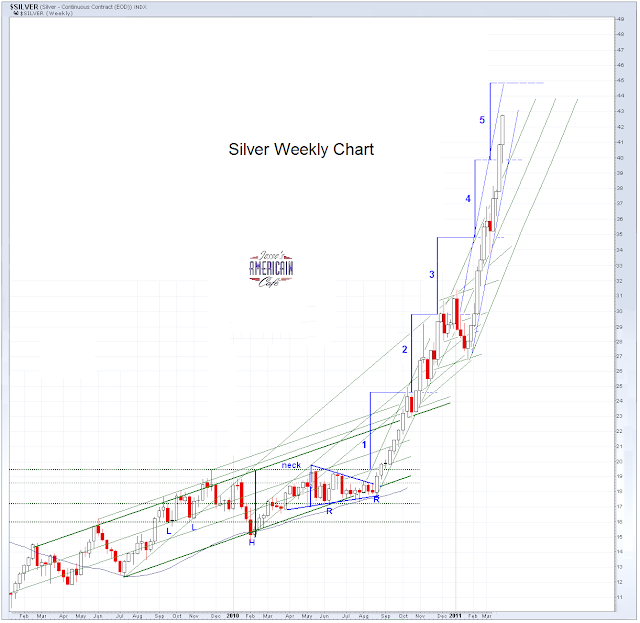When does public policy go too far and become an instrument primarily serving private fraud?
I have had this video on the manipulation of the debt markets by the Fed in the Matières à Réflexion links since last week, but moved it here on request because apparently many missed it, and did not understand its importance, the implications.
It is a fairly good example of the rationale for the Fed and its member banks dealing in paper derivatives to manage perception and attempt to 'manage' longer term interest rates. And by extention it also provides the reason and even some of the means in manipulating the price of gold and silver.
Papers such Gibson's Paradox by Larry Summers demonstrate a belief that the price of gold and silver have a definite correlation to long term interest rates, which the Fed is admittedly trying to 'shape.'
One may make the argument that this correlation between gold and the bond no longer exists since the US is no longer on a gold standard, and futher, just because the FED may use derivatives to distort long term rates, that does not mean the Fed and their multinational banking associates are doing the same thing in related markets such as gold, silver, stock prices, LIBOR, etc. It is circumstantial.
But in point of fact the evidence from the Fed's own transcripts, and quotes from various members and bankers, demonstrates that the perception of at least gold and silver in the market is still an active concern and of serious interest to the Fed. So now we have motive and means, and indications in half hidden documents that it is indeed occuring.
Why else would JPM short multiples of the entire supply of silver that probably exists in the world, while also holding massive positions in the derivatives markets, except for the purpose of manipulating the prices?
The recent stonewalling on the release of the relevant documents by the Fed is not frivolous, as well as the antics at the CFTC concerning position limits and investigation into the silver market. What starts out innocently enough obtains a life of its own, and the cover ups ensue, along with the abuses and private profiteering as we saw in the TALF disclosures, and the situation becomes much greater and more far-reaching than its original intent. A well intentioned program can indeed become a money machine for looting the public trust.
The problem of course is that while the Fed and its associated private banks can never run out of their own paper, or the ability to write derivatives on that paper, they can and may very well run out of physical gold and silver to support their financial engineering, if the demand is made to 'stand and deliver.' This has long been identified here as one of their weak spots which may be reached before the more extreme limit of the value at exchange of the bonds and the notes of zero duration, the dollar.
It is never so much the original scheme that brings them down, but it is almost always the ever-expanding cover up of personal larceny.
In other words, gold and silver bullion may expose the weakness of the Treasury, and the Fed and their member banks, and thereby restrict their ability to operate freely in managing perception by manipulating prices and rates. This is why they hold such an animosity to it, and attempt to conceal so many of their dealings in it, even promoting hysterical attacks from friendly sources in the establishment media.
Related: More on the Literal Bernanke Put- FT





































